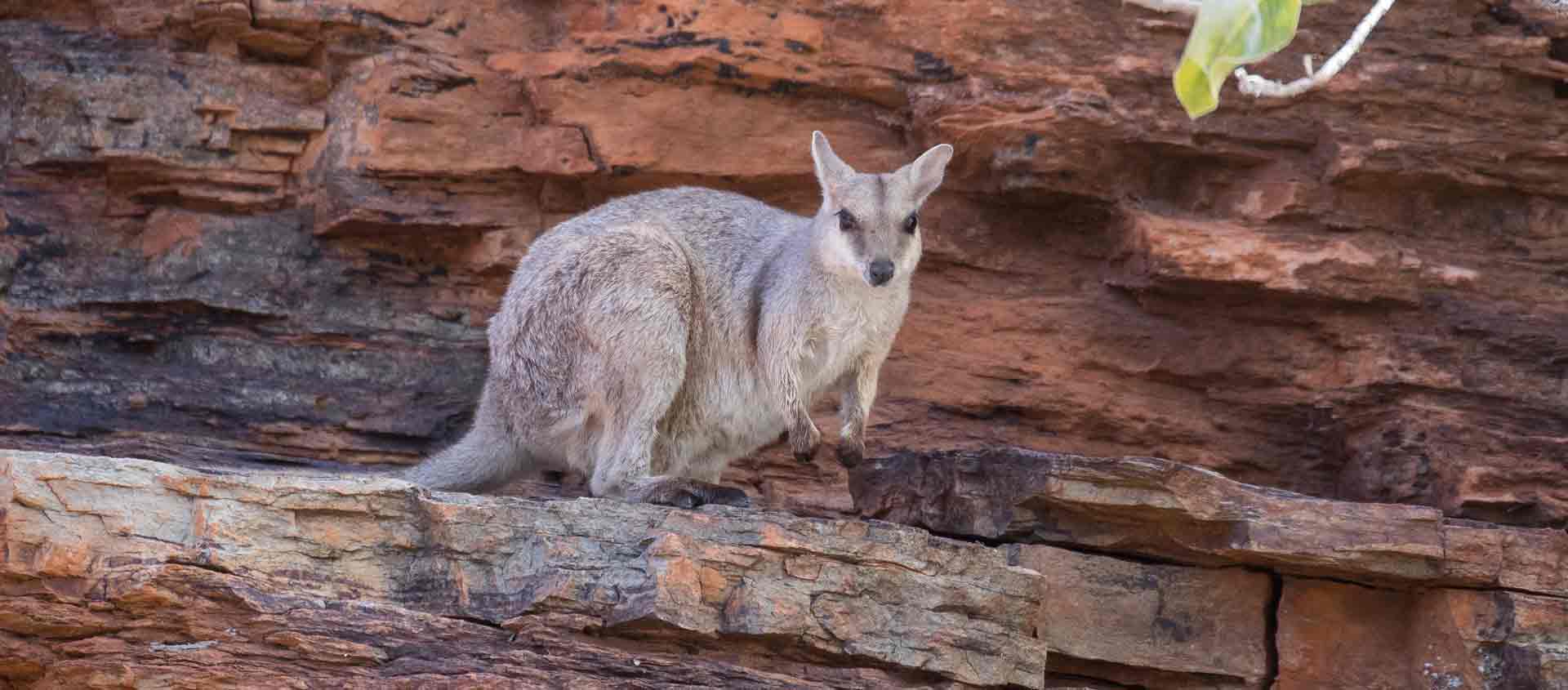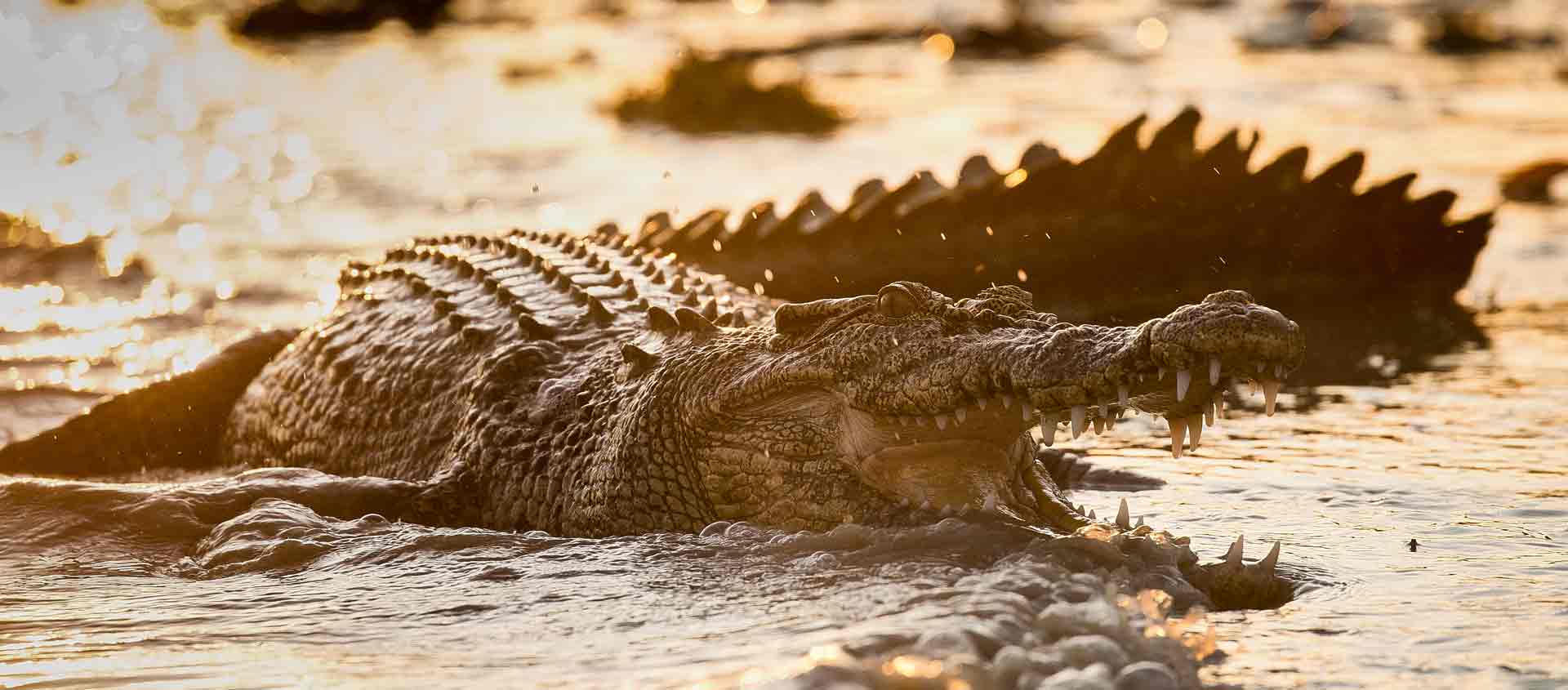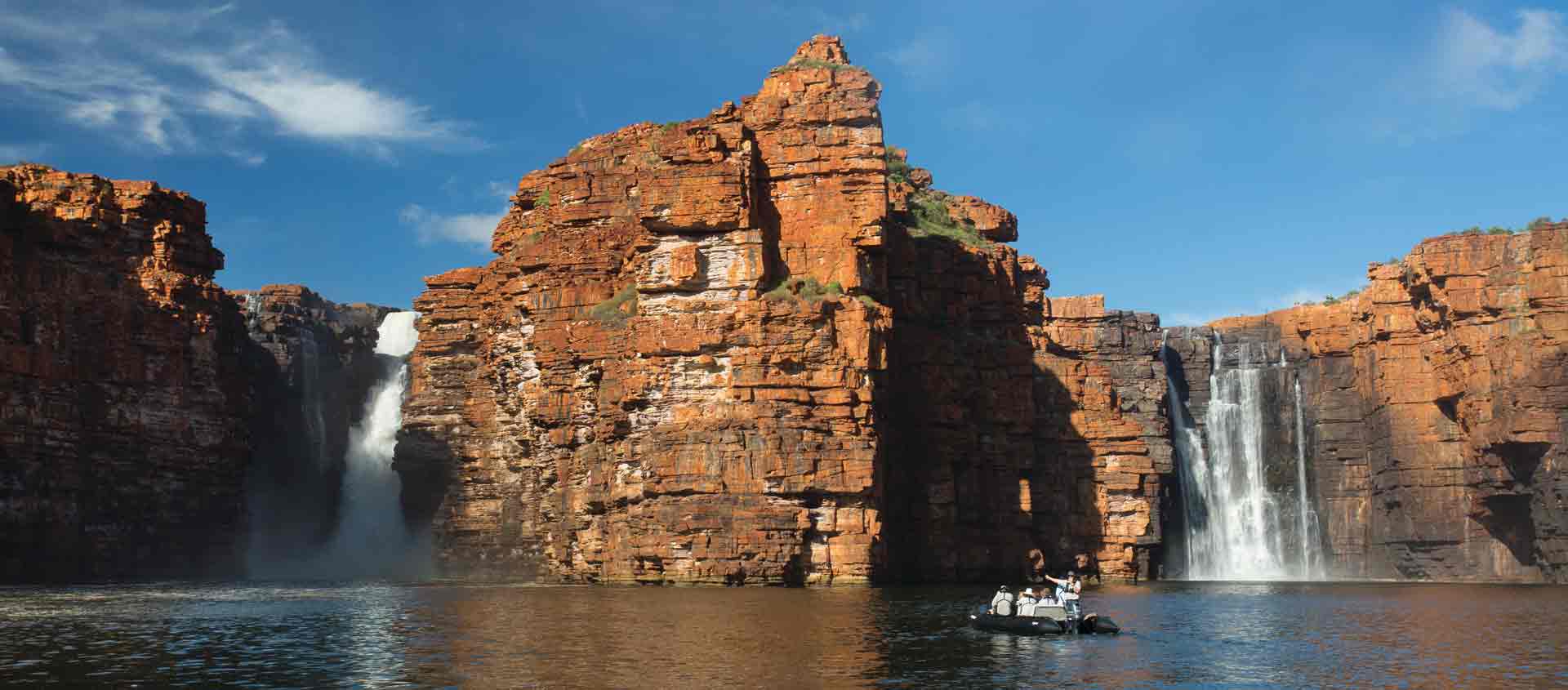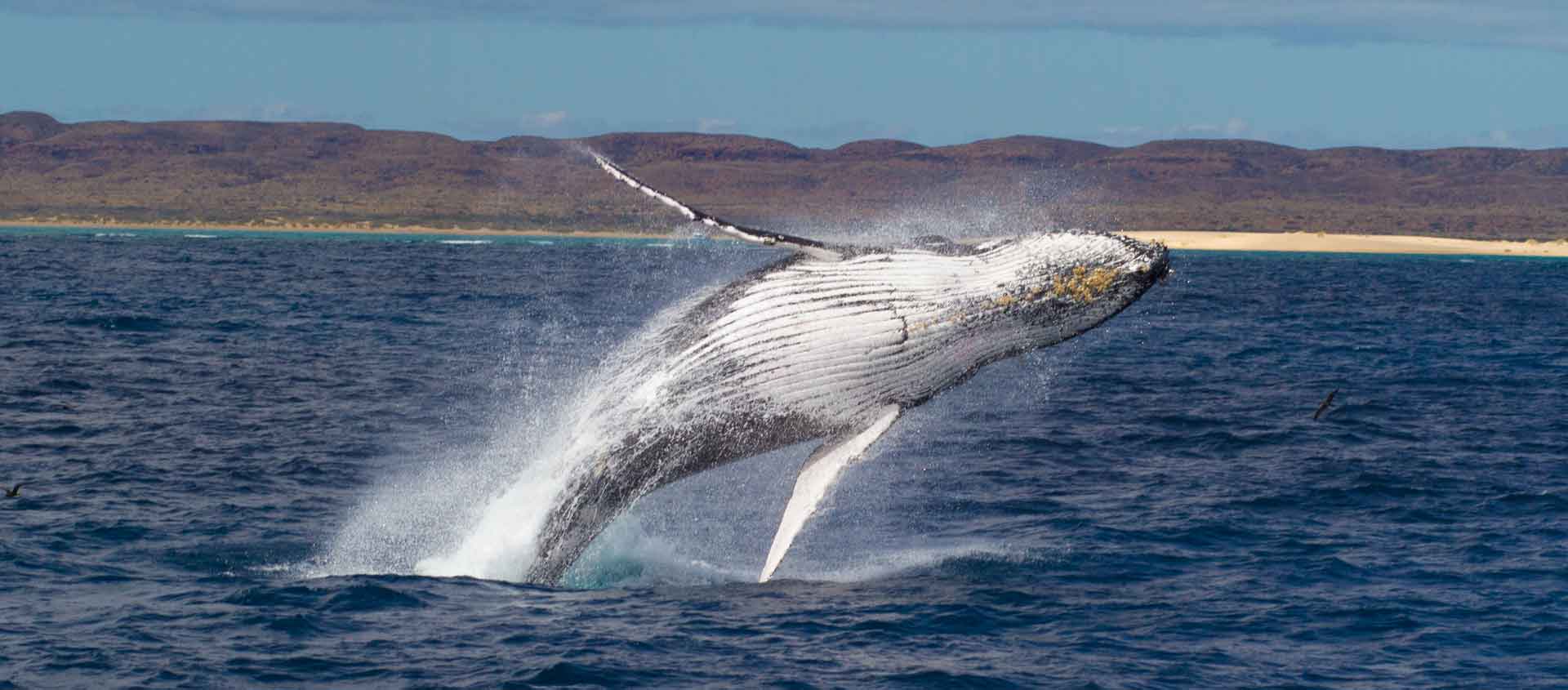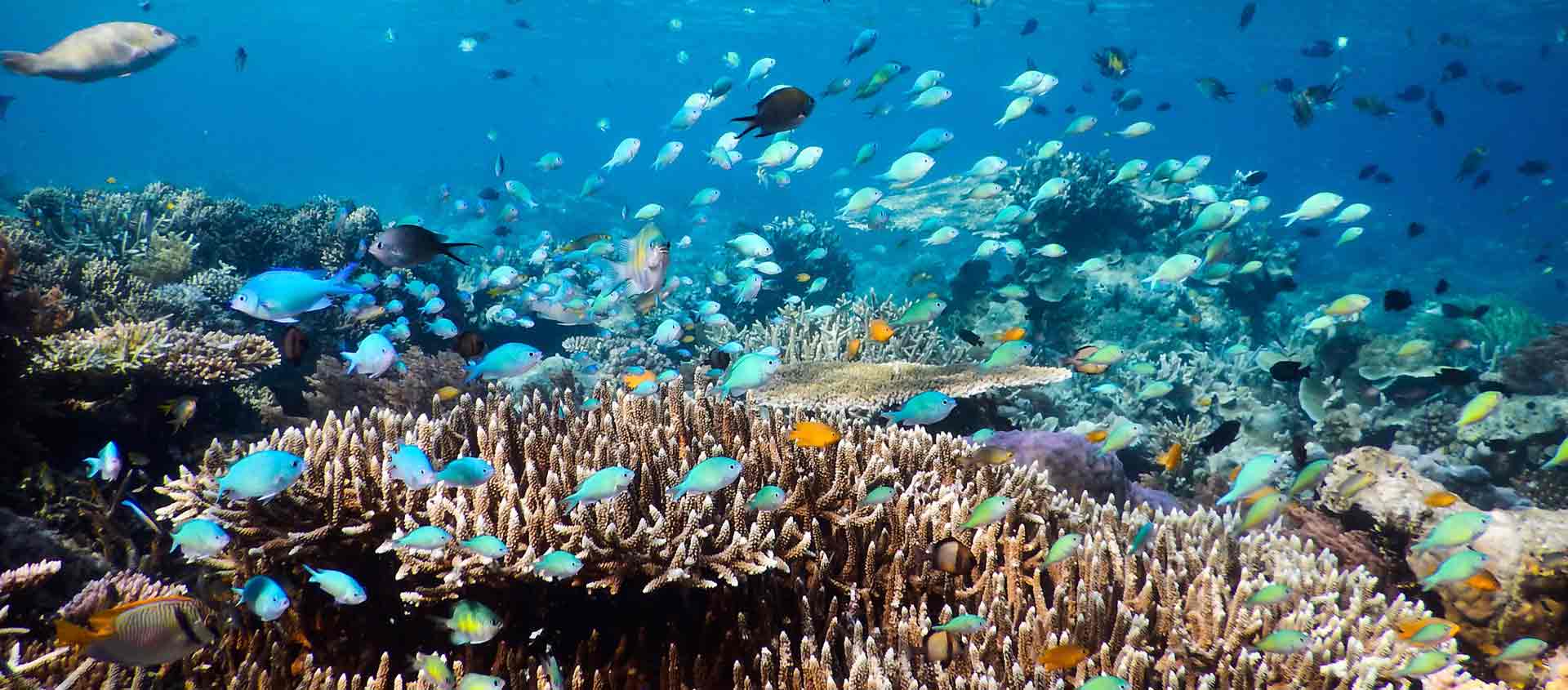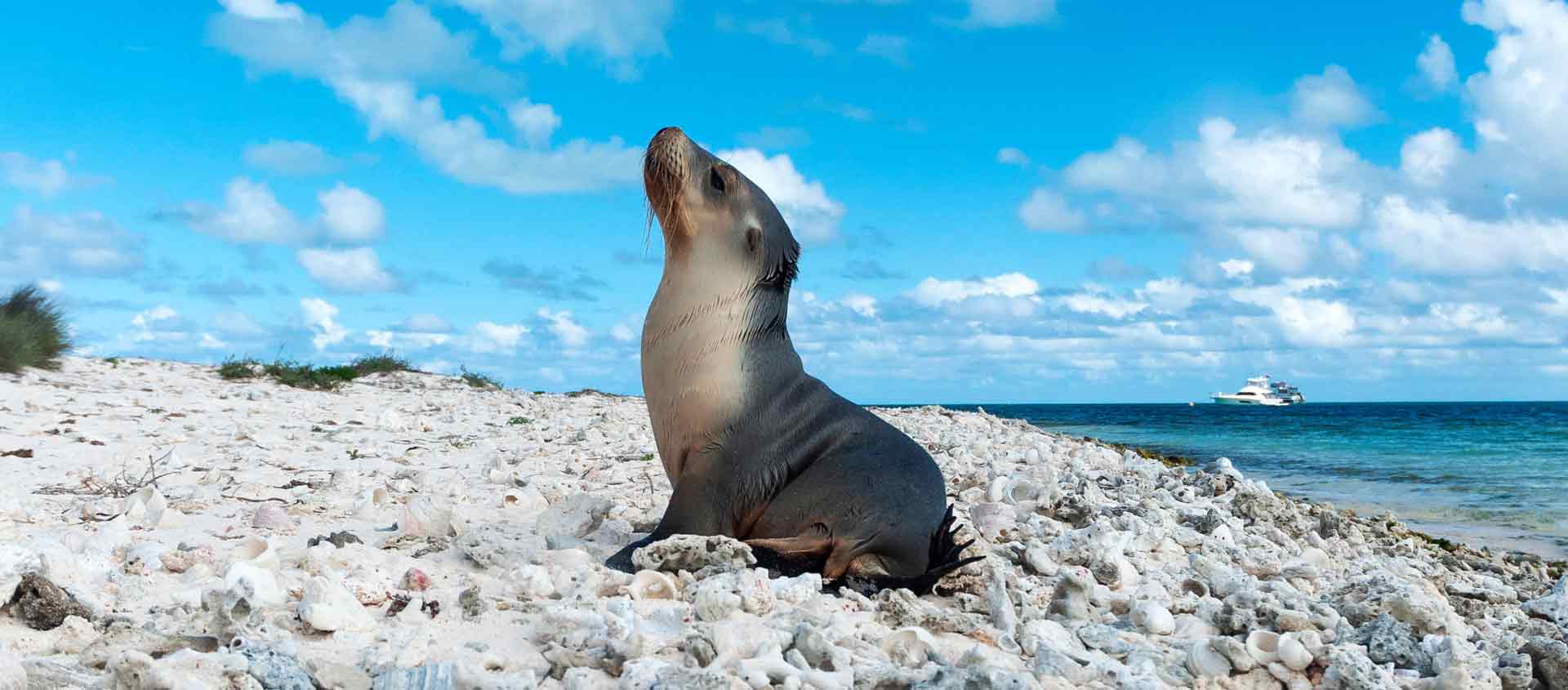Western Australia
onboard Silver Explorer
Cruise Australia’s West Coast
This is an adventure that epitomizes expedition cruising: the opportunity to explore some of the most remote, inaccessible, rugged and sparsely populated terrain on Earth. Join Apex in exploring the nooks and crannies of Australia’s coastal Outback. You'll cruise Australia’s west coast to discover archipelagos rich in marine life, pristine reefs, desolate mountains and magnificent waterfalls. Learn of the area’s long Aboriginal history, the European explorers who first visited, and true tales of the old Outback. See clouds of breeding seabirds, migrating Humpback Whales, wallabies, and the infamous Saltwater Crocodile. Cross the Timor Sea and visit one of Indonesia’s most remote islands. Relish the access few people get as you discover Australia’s Last Frontier.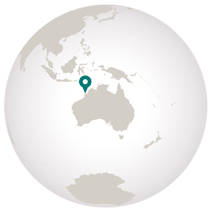
Destinations
- Travel by Air
- Travel by Road
- Travel by Boat
- Travel by Bullet Train
- Travel by Rail
- Travel by Dog Sled
- Day 1
- Day 2
- Day 3
- Day 4
- Day 5
- Day 6
- Day 7
- Day 8
- Day 9
- Day 10
- Day 11
- Day 12
- Day 13
- Day 14
- Day 15
- Day 16
- Day 17
- Day 18
- Day 19
- Day 20
-
Arrive Perth, Australia
Arrive in Perth, a thriving metropolitan city with thousands of miles of coastline to the north and south. Perth is the ideal starting point for your exploration, a city with a clean, progressive and happy vibe. Settle into your hotel, then join your team of Apex naturalists at a welcome dinner and briefing. Overnight at Westin Perth.
-
Perth / Fremantle / Embark Silver Explorer
After breakfast, head to Perth’s port, Fremantle, located just 12 miles down the road. This city has long lived in the shadow of its larger neighbor, but a colorful past and renewed cultural scene have brought it attention of late. A tight nest of streets with atmospherically faded Victorian and Edwardian buildings are home to friendly bars, bookshops, craft breweries, and Indian Ocean seafood shacks. This afternoon, head to the harbor and embark Silver Explorer, your home away from home for the next 17 nights. Be on deck as the ship pulls away and sails north toward the Abrolhos Islands.
-
Sunday, August 21: Abrolhos Islands
Lying only 37 miles off the mainland, the Abrolhos Islands are sometimes described as the Galápagos of the Indian Ocean. Here, the warm southward-flowing Leeuwin Current meets cooler southern waters, offering ideal environments for both tropical and temperate marine life. Two-thirds of the 400 fish species are tropical, while cool-water-favoring Australian Sea Lions, one of the rarest pinnipeds on Earth, are close to their northern limit. Take Zodiacs ashore for a trek under the guidance of resident researchers, watching for the prolific seabirds that call these rocky islands home. Australia’s only colony of Lesser Noddies breeds here, alongside Sooty and Bridled Terns, and a phenomenal two million Wedge-tailed and Little Shearwaters. The elusive Painted Buttonquail might also be seen, while Dwarf Bearded Dragons, spiny, tree-climbing lizards, scuttle across the paths. Afterward, board a catamaran for the chance to snorkel along some of the most southerly coral reefs on Earth. Boasting more than 190 coral species, these reefs support a plethora of subtropical damselfishes, wrasses, groupers and snappers, with Australian Sea Lions as occasional visitors.
-
Dirk Hartog Island
Dirk Hartog Island holds a unique place in Australia’s history as the site of the first recorded European landing on Australian soil, in 1616. At first glance, little has changed since then. But introduced animals have wreaked havoc on native fauna. A program of pest eradication and native animal reintroduction is slowly restoring the island to its original state. Land on a pristine beach in Shark Bay to snorkel among a magnificent array of marine life and perhaps even catch a glimpse of one of the estimated 10,000 Dugongs living in the bay. Scan the shallow seagrass flats for the telltale rounded gray shapes and snorting nostrils of these gentle sirenids. Common Bottlenose Dolphins also frequent the area, while Hawksbill, Loggerhead and Green Turtles may all be found in these waters. Dirk Hartog is remote enough to have its own distinctive race of bird, the black-and-white “Dirk Hartog Fairy-wren”, as well as the rare Southern Emu-wren, and raptors such as Spotted Harrier, Nankeen Kestrel and Brown Goshawk.
-
At Sea
Spend the day at sea as the ship heads north toward Exmouth. Attend lectures on the flora, fauna and history of Australia’s Coral Coast. It is the perfect time of year to behold the great Humpback Whale migration. Upwards of 30,000 individuals make their way up the coast at this time of year. While out on deck also watch for Spinner and Short-beaked Common Dolphins.
-
Exmouth
August is a month of peak activity at Ningaloo Reef, the world’s longest and most pristine fringing reef. Humpbacks use the reef’s protection to rest along their migration route, and the last of the season’s Whale Sharks may still be around. Spend time snorkeling from the beach in Turquoise Bay, or along the Ningaloo Reef from a local boat. Look for Green Sea Turtles, Spotted Eagle Rays and many of the over 500 species of fish, including a plethora of butterflyfishes, wrasses, and parrotfishes. Alternatively, stay dry and still see the splendor for yourself at Tantabiddi, where a glass-bottomed boat provides an unobstructed view of the spectacular underwater world. You may also sign up for a scenic flight over Exmouth (at additional cost), observing the contrast between the rugged, multi-hued limestone of Cape Range National Park on the mainland, and the vivid blue waters of Ningaloo Reef.
-
Montebello Islands
Having rounded the northwest tip of Australia, you will wake up this morning on the Pilbara Coast. Montebello, Italian for ‘beautiful mountain’, is anything but. The approximately 250 islets are, in fact, low, flat and arid, but many hold a treasure trove of biodiversity. Despite the British using the islands for three nuclear bomb tests in the 1950s, all but two of the islands are safe to explore. Two highly endangered nocturnal mammals, the Mala (Rufous Hare-wallaby), and the Djoongari (Shark Bay Mouse), thrive here. The islands are an important seabird breeding colony. Look for roosting Roseate, Fairy and Greater Crested Terns, Sooty Oystercatchers along the beaches, and Eastern Osprey and White-bellied Sea Eagles soaring overhead.
-
Dampier Archipelago
Due east of the Montebellos lies Dampier Archipelago, a kaleidoscope for the senses with its rust-colored rocks, white beaches and turquoise seas. 42 islets make up Dampier, named after the English pirate-turned-explorer who first visited in 1699. The area has, however, been inhabited for many thousands of years—evidenced by the greatest concentration of rock engravings in the world. The archipelago and peninsula are known as “Murujuga” by the Aboriginal people, and their excellently preserved drawings of animals, people, mythical beings, and geometric patterns date back 20,000 years. On the islands’ seaside cliffs, watch for the shy Rothschild’s Rock-wallaby, and the stick nests of Ospreys and White-bellied Sea Eagles.
-
At Sea
Spend time with your knowledgeable expedition team, learning about the upcoming Kimberley coast, a vast, remote and harsh terrain larger than 75% of the world’s countries, but scarcely populated.
-
Lacepede Islands
The Lacepedes are best known as a birder’s paradise. Since the eradication of rats on these four islands in 1986, they have been identified as an Important Bird Area due to their significance as a breeding spot for several species. The breeding colony of Brown Boobies is possibly the largest in the world, with up to 18,000 breeding pairs, and the islands also support a large population of Roseate Terns. Other birds adding to the spectacle include Masked Boobies, Australian Pelicans, Bridled and Great Crested Terns, Common Noddies, and Lesser Frigatebirds. Pied and Sooty Oystercatchers are numerous on the beaches, while Eastern Reef Egrets stalk the shallows. The Lacepedes are also the single most significant breeding site in Western Australia for the nationally vulnerable Green Turtle. Explore the lagoon by Zodiac, watching for Green Turtles and impressive Shovelnose Rays (also known as Giant Guitarfish), while appreciating the staggering numbers and diversity of seabird breeding colonies along the shoreline. Landings are not permitted at the Lacepedes, due to the highly sensitive nature of the environment.
-
Buccaneer Archipelago
Comprised of over 800 islands, the Buccaneers protect the mainland from the huge 40-foot tides and astonishing force of the Yampi Sound. These tides wreaked havoc with the pearling fleets that first came here in the 19th century, evidenced by the many isolated graves standing on the islands. While the speed and power of the water may not make for pleasant sailing, they do create fantastic natural phenomena, such as the Horizontal Waterfalls in Talbot Bay. Today, board a “fast boat” and take an exhilarating ride through these falls.
-
Hunter River Region
Oft considered one of the most scenic parts of the Kimberley Coast, Prince Frederick Harbour and the Hunter River are lined with pockets of ancient monsoon rainforest, pristine mangroves and dramatic sandstone cliffs. Explore the area by Zodiac, or opt for a scenic helicopter flight (at additional cost)—Naturalist Island, at the mouth of the river, has a pristine crescent of sandy beach that makes a perfect landing site for small helicopters. Soar over the vast untouched coastline, with views of Prince Frederick Harbour and Mt. Trafalgar in the distance, then inland to the majestic Mitchell Falls, where four tiers of cascading water plunge into deep pools that flow out into the mighty Mitchell River. Land above the falls on a natural rock platform. The headwaters are cool, and a dip in the fresh water is a welcome reprieve from the heat of the heartland.
-
Hunter River Region
Using local boats, cruise up the scenic Hunter River. The sandstone escarpment at the river mouth known as “Kampamantiya” rises over 600 feet before giving way to extensive mud banks and mangrove forests, home to Great-billed Herons, Chestnut Rails, and Azure Kingfishers, alongside abundant mudskippers, fiddler crabs, Flatback Turtles, and iconic Estuarine, or Saltwater, Crocodiles.
-
King George River Region
Zodiacs take you to King George Falls, whose 260-foot twin cascades are among the highest in Western Australia. As the river weaves through an amazing landscape of near-vertical red rock formations, a parade of wildlife awaits—Saltwater Crocodiles and amazing birdlife, including Red-collared Lorikeets, raucous Sulphur-crested Cockatoos and Brahminy Kites. These waterfalls, surrounded by ancient metamorphosed sediment, volcanic rocks and granite, are thought by the local indigenous people, the Balanggarra, to be the male and female incarnations of the Wunkurr, or Rainbow Serpent. The daring and agile can choose to hike up to the top of the falls. At nearly 300 feet, the views are phenomenal, and your weary muscles will be rewarded with a dip in the summit’s natural pools.
-
Wyndham
Wyndham is the Kimberley’s oldest town, and the spirit of the old Outback is very much alive and well. Today, Wyndham operates mainly as a port, exporting cattle and servicing the mining industry, but it is also a gateway to the breathtaking Bungle Bungle mountain range and Ord River. Choose to take a scenic flight over the Bungle Bungles and Lake Argyle, or enjoy a full-day river cruise up the Ord and into Lake Kununurra.
Those who choose the Bungle Bungle flightseeing option will fly past Lake Kununurra before crossing the Carr Boyd Range, which holds back the waters of the inland sea, Lake Argyle. Enjoy aerial views of the Ord Dam. Fly over the Osmand Range, and on to Purnululu National Park and the impressive Bungle Bungle massif, with its giant orange-and-black striped domes. Known to the local Aboriginal people for thousands of years, the Bungle Bungles were only discovered by the outside world in the mid-1980s. Flying is the only way to see this hidden world of gorges and pools. Return to Wyndham via the Argyle Diamond Mine and enjoy lunch at a local restaurant.
Those preferring to head up the peaceful Ord River, will look for Johnstone’s, or Freshwater, Crocodiles, Short-eared Rock-wallabies and a variety of birds, including the stately Brolga, White-necked Heron, Pheasant Coucal, and possibly even the dazzling Star Finch. After lunch at a riverside camp, continue into the heart of the Carlton Gorge, with the Kimberley’s signature red cliffs. The boat will navigate the last 10 miles of the river to the foot of the Ord River Dam, known locally as “Top Dam”. Transfer to a bus for a drive across the dam wall to Lake Argyle. Visit the Lake Argyle Resort, the site of the workers’ camp during the dam’s construction, before driving back to Wyndham. Stop at the Argyle Homestead Museum to learn just how much grit it took to open this area to agriculture.
-
At Sea
Spend time on deck as the ship heads north through the Timor Sea toward Indonesia. Cetaceans are both diverse and numerous in these waters, and keen watchers may see large pods of Spotted, Spinner and Fraser’s Dolphins, along with Melon-headed and Short-finned Pilot Whales, or perhaps even Pygmy Blue Whale! Learn about the flora and fauna of the upcoming Tanimbar archipelago, a group of roughly 65 islands located in the far south of Indonesia’s Molucca province, dividing the Banda Sea and the Arafura Sea.
-
Matakus Island, Indonesia
The tiny but paradisiacal Matakus Island lies just south of Tanimbar’s main island of Yamdena. With only about a hundred residents, it is virtually unknown by tourists. Disembark the ship by Zodiac and come ashore to friendly, welcoming villagers. Visit the village center and feast your eyes on a traditional dance performance. See an ikat weaving demonstration and take time to wander around the village while getting acquainted with the local customs. Take the afternoon to explore further afield: search the island for its many endemic birds, such as the Tanimbar Cuckoo-dove, Cinnamon-tailed Fantail, and Tanimbar Friarbird. Or head to one of the island’s many white-sand beaches to snorkel—fields of Staghorn Coral and schools of cardinalfishes await under Matakus’ crystalline waters.
-
At Sea
Spend a leisurely day crossing the Timor Sea. Stroll the decks looking for dolphins and other cetaceans and join the expedition team to recap the journey as you sail toward Australia. This evening, enjoy a last toast to the adventure with the captain’s farewell dinner aboard the ship.
-
Darwin
Australia’s only tropical city and gateway to the Top End, Darwin is a full 2,000 miles from Sydney and Melbourne, and it relishes it; the city’s culture and history are as unique within Australia as its tropical climate. Darwin has a surprisingly cosmopolitan mix—more than 50 nationalities are represented—and is still rooted deeply in its Aboriginal origins. Disembark Silver Explorer after breakfast and head to the magnificent George Brown Darwin Botanic Gardens, which showcases plants from the Top End: monsoon vine forest, mangroves and a magnificent collection of native palms and cycads. This afternoon, explore the city on your own. Take in the street-side restaurants, innovative local museums, and Indigenous art galleries. Stroll the outdoor market. Rejoin your fellow travelers and expedition team for dinner. Overnight at Hilton Darwin.
-
Darwin / Home
After breakfast, transfer to the airport for your international flights home.

